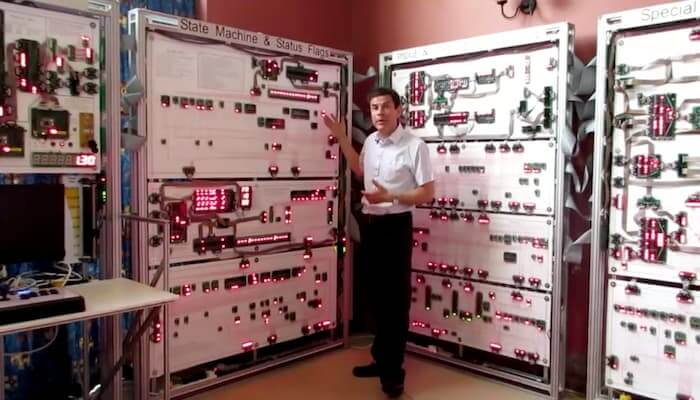- Get link
- X
- Other Apps
- Get link
- X
- Other Apps

Modern technologies are aimed at minimizing the size of processors. But in some cases, for example, for educational purposes, it is necessary to collect a giant copy of a tiny device. This is exactly what the engineer at Stanford University, James Newman, did. Alone, he built a giant processor the size of an entire room. He called his brainchild correspondingly - Megaprocessor. Now, university students will be able to see what processes that are inaccessible to the naked eye are flowing inside microchips.

The size of the processor is really impressive: ten meters in width and two meters in height. All of its elements are placed on several separate panels, so that teachers can clearly explain to their students what and how is happening inside their favorite smartphones and computers. Megaprocessor, like its reduced counterparts, is based on transistors. Only in this case, here they are not millions and not billions, but only a few thousand ordinary amateur radio transistors with LEDs attached to them.
The Megaprocessor clock speed is only 8 kilohertz, but even at such a low frequency it is difficult to keep track of the processes occurring inside it, so it is usually launched at a frequency of only 1 hertz for convenience and clarity. So what can you run on this computer? Of course, the classic game Tetris, which is displayed on a giant LED screen! If you are interested in the value of this giant processor, then James Newman collected it for $ 52,000. Not a very rational "price-quality" ratio, but what can not you do for educational purposes?
The article is based on materials .
- Get link
- X
- Other Apps
Comments
Post a Comment